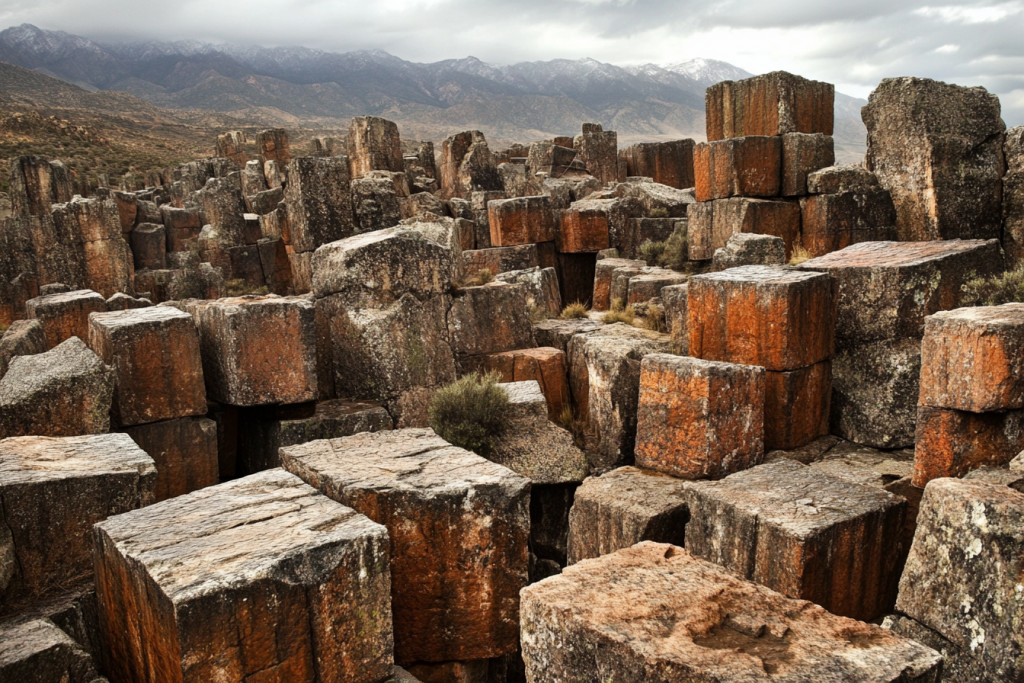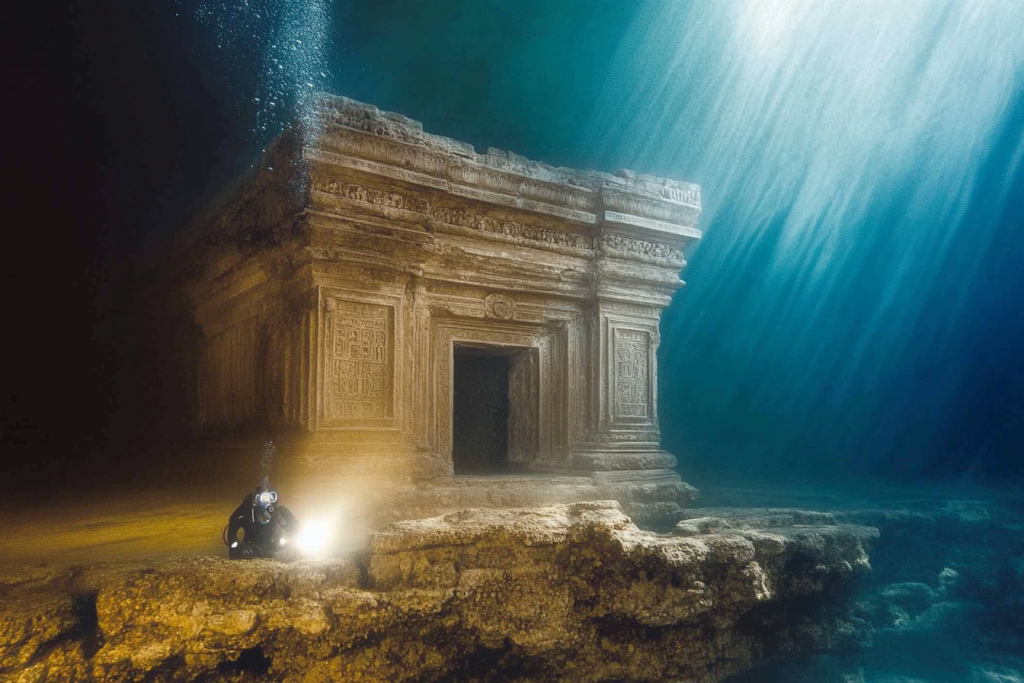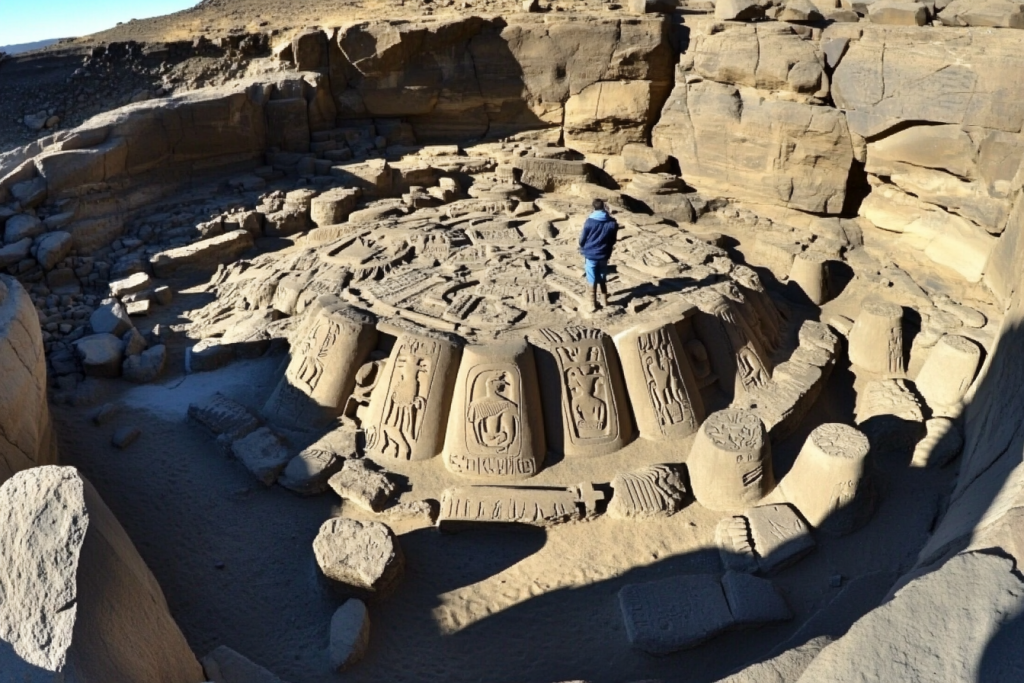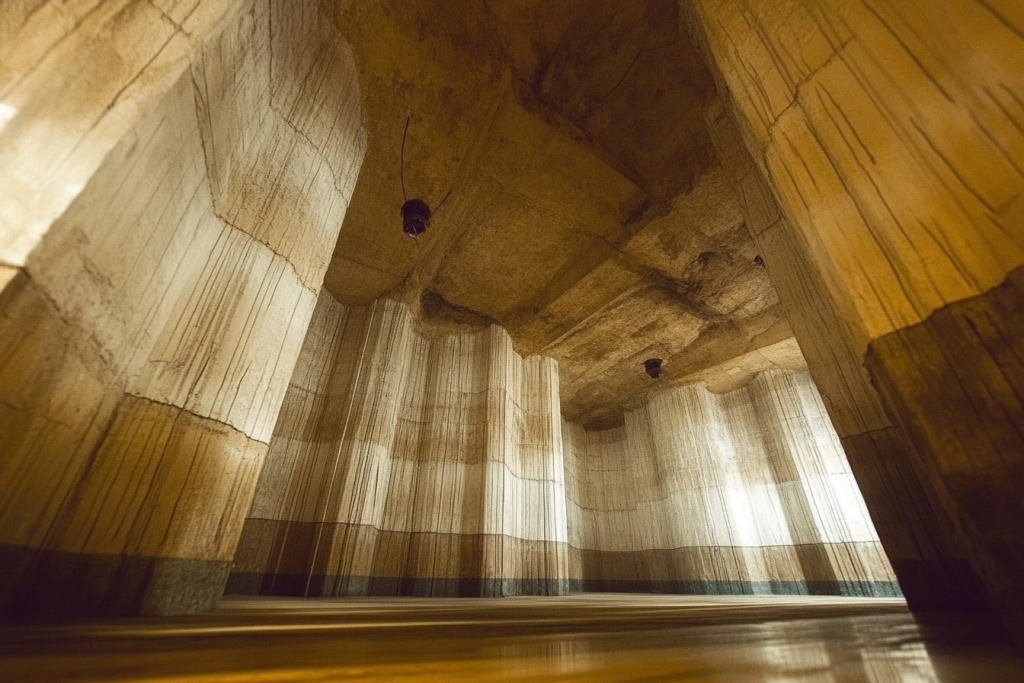
Some ancient structures defy logic, history, and even the known capabilities of the civilizations that built them. From massive stone monoliths carved with impossible precision to cities constructed in places that should have been uninhabitable, these sites raise more questions than answers. How were they built? What advanced knowledge or lost techniques were used? These mysterious structures challenge everything we think we know about the past.
The Ruins of Puma Punku

High in the Bolivian Andes, the stone ruins of Puma Punku display a level of precision that shouldn’t have been possible with ancient tools. Gigantic blocks of andesite, one of the hardest stones on Earth, were cut with perfect right angles and interlocking designs. Some believe advanced machinery must have been used, yet no records of such technology exist. How an ancient civilization created these perfectly shaped stones remains a baffling mystery.
The Underwater City of Dwarka

Beneath the Arabian Sea off India’s coast lies the submerged ruins of an ancient city, matching descriptions of the legendary Dwarka. The city’s layout suggests a highly advanced civilization, with stone walls, pillars, and streets stretching across the seabed. Carbon dating suggests it could be over 9,000 years old—far older than previously believed civilizations in the region. If true, this would rewrite history as we know it.
Gobekli Tepe: The First Temple?

Predating Stonehenge by thousands of years, Göbekli Tepe in Turkey challenges everything historians thought they knew about early civilizations. Massive stone pillars arranged in intricate circles suggest a complex society, yet no evidence of permanent settlement has been found nearby. Who built it, and why was it buried intentionally? Its existence suggests advanced societal organization long before agriculture was thought to have begun.
The Yonaguni Monument

Off the coast of Japan, a massive underwater structure with distinct terraces, steps, and geometric patterns sits in the depths. Some argue it is a natural formation, while others insist it was carved by human hands. If it was man-made, it would push back the timeline of advanced civilizations in the region by thousands of years. Its origins remain an unsolved enigma.
Ba’albek’s Impossible Stone Blocks

In Lebanon’s Ba’albek, a colossal platform of stone blocks, some weighing over 1,200 tons, serves as the foundation for an ancient temple. Modern cranes struggle to lift stones of this magnitude, yet these were cut, transported, and stacked with inexplicable precision. No records exist explaining how ancient builders accomplished this, leaving archaeologists in awe of their lost techniques.
The Longyou Caves

Deep beneath China’s Zhejiang province, the Longyou Caves feature massive underground chambers carved into solid rock. Unlike natural cave formations, their walls and ceilings are covered in intricate tool marks, as if chiseled with unknown technology. No records mention their construction, and the sheer volume of excavated material remains unaccounted for. Who built these caves—and why—remains a mystery.
The Rock-Cut Kailasa Temple

Carved from a single massive rock, the Kailasa Temple in India is an engineering marvel with no clear explanation. Unlike traditional temples built from the ground up, this structure was excavated from top to bottom, a technique requiring immense planning and skill. With intricate carvings and towering pillars, its construction remains a feat beyond what was thought possible in its time.
Sacsayhuamán’s Seamless Stones

The massive stone walls of Sacsayhuamán in Peru fit together with mind-boggling precision—without mortar. Some of the stones weigh over 100 tons, yet they were transported and placed so precisely that a knife blade can’t slip between them. The exact technique used to shape and move these stones remains unknown. Could the builders have had knowledge that modern engineers lack?
The Great Zimbabwe Ruins

In the heart of Africa, the ruins of Great Zimbabwe defy conventional historical narratives. Featuring massive stone walls constructed without mortar, the site suggests a once-thriving civilization with advanced engineering skills. European explorers once refused to believe it was built by local civilizations, yet its true origins remain unclear. How this structure came to be is still debated by historians.
The Tarxien Temples of Malta

The ancient Tarxien Temples in Malta feature massive stone blocks arranged in precise formations. The civilization that built them predated the pyramids, yet their construction techniques remain unknown. Advanced artwork and carvings suggest a culture far more developed than expected for its time. How these temples were erected with primitive tools is a question that still puzzles experts.
The Hypogeum of Hal Saflieni

Beneath Malta lies the Hypogeum of Hal Saflieni, a vast underground necropolis featuring acoustically perfect chambers. The design amplifies sound in ways modern engineers struggle to explain. Some theorists suggest it was used for ritualistic sound experiments. If true, this would suggest an understanding of acoustic science far beyond its time.
The Derinkuyu Underground City

Beneath Turkey’s Cappadocia region lies a vast underground city capable of housing thousands. With ventilation shafts, hidden passageways, and water systems, it was an engineering marvel designed for protection. The sheer scale and sophistication of its construction remain baffling. Who built this subterranean fortress, and what were they hiding from?
The Magnetic Anomalies of Nan Madol

On a remote island in Micronesia, the ancient city of Nan Madol consists of massive basalt stones stacked like a lost Atlantis. Some of these stones weigh up to 50 tons, and yet they were somehow transported across the ocean and arranged in precise formations. Strange magnetic anomalies have been recorded here, adding to the mystery. Could this forgotten civilization have harnessed forces beyond our understanding?
The Ruins of Tiahuanaco

Near Lake Titicaca, the ruins of Tiahuanaco feature precision-cut stonework and intricate carvings that seem out of place in their time period. Some stones appear laser-cut, with interlocking notches that suggest a level of craftsmanship rivaling modern engineering. The lack of records leaves historians grasping for explanations. Did this ancient civilization possess technology far ahead of its time?
The Enigmatic Towers of Silves

In the heart of Portugal, the ancient towers of Silves stand as an enigma. Unlike any known medieval structures, these towers feature a unique blend of architectural styles, some predating the recorded history of the region. Legends speak of an unknown civilization that once occupied the area, using mysterious construction techniques that remain unexplainable. Despite numerous studies, the origins and purpose of these towers continue to puzzle historians and archaeologists alike.
What Else Have We Overlooked?

History is full of mysteries, but some are too vast to ignore. If civilizations long before us built structures that defy explanation, what other knowledge has been lost to time? Perhaps these ancient sites aren’t just relics of the past, but hints of forgotten achievements waiting to be rediscovered. The greatest puzzle may not be how they were built—but what else we have yet to find.





